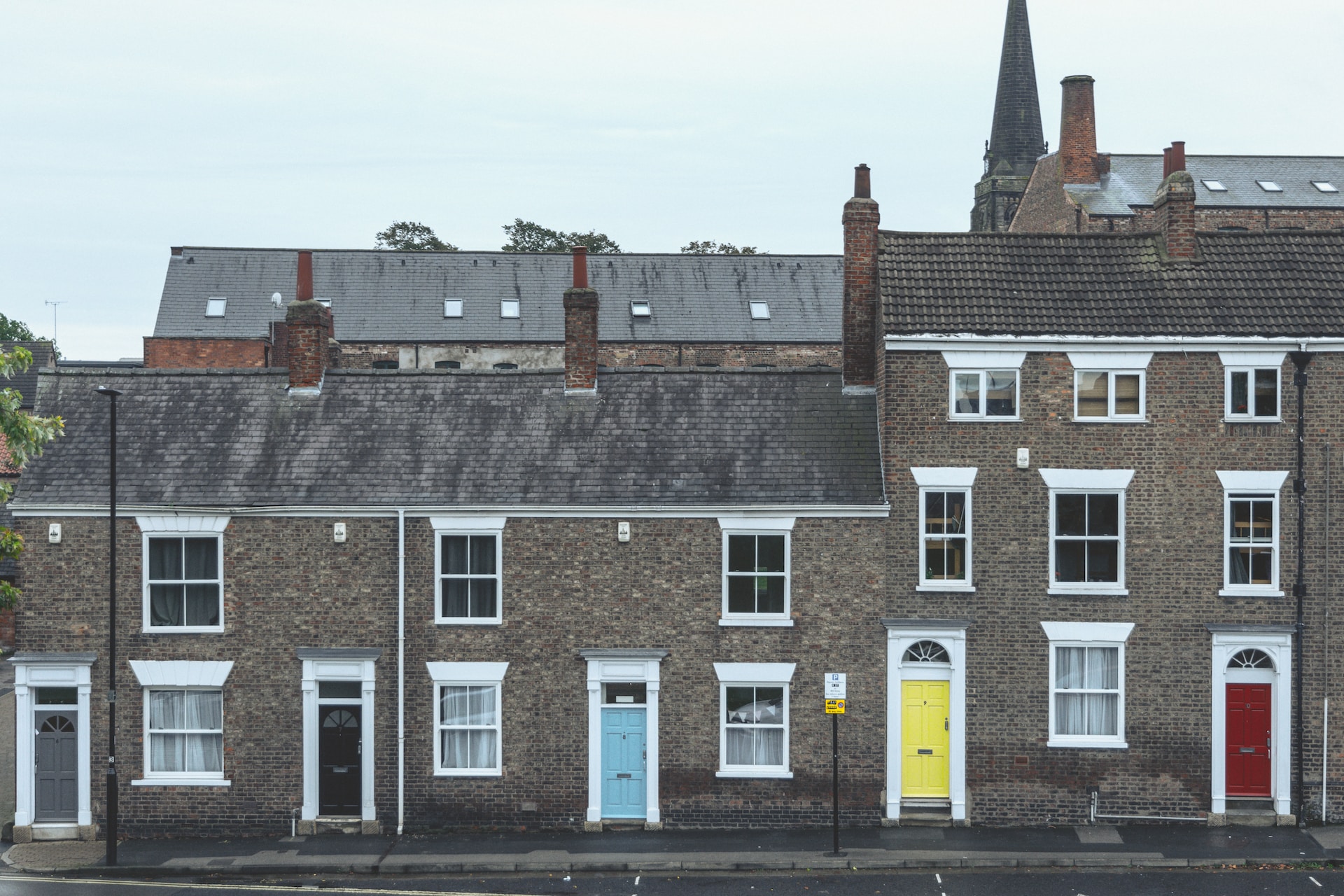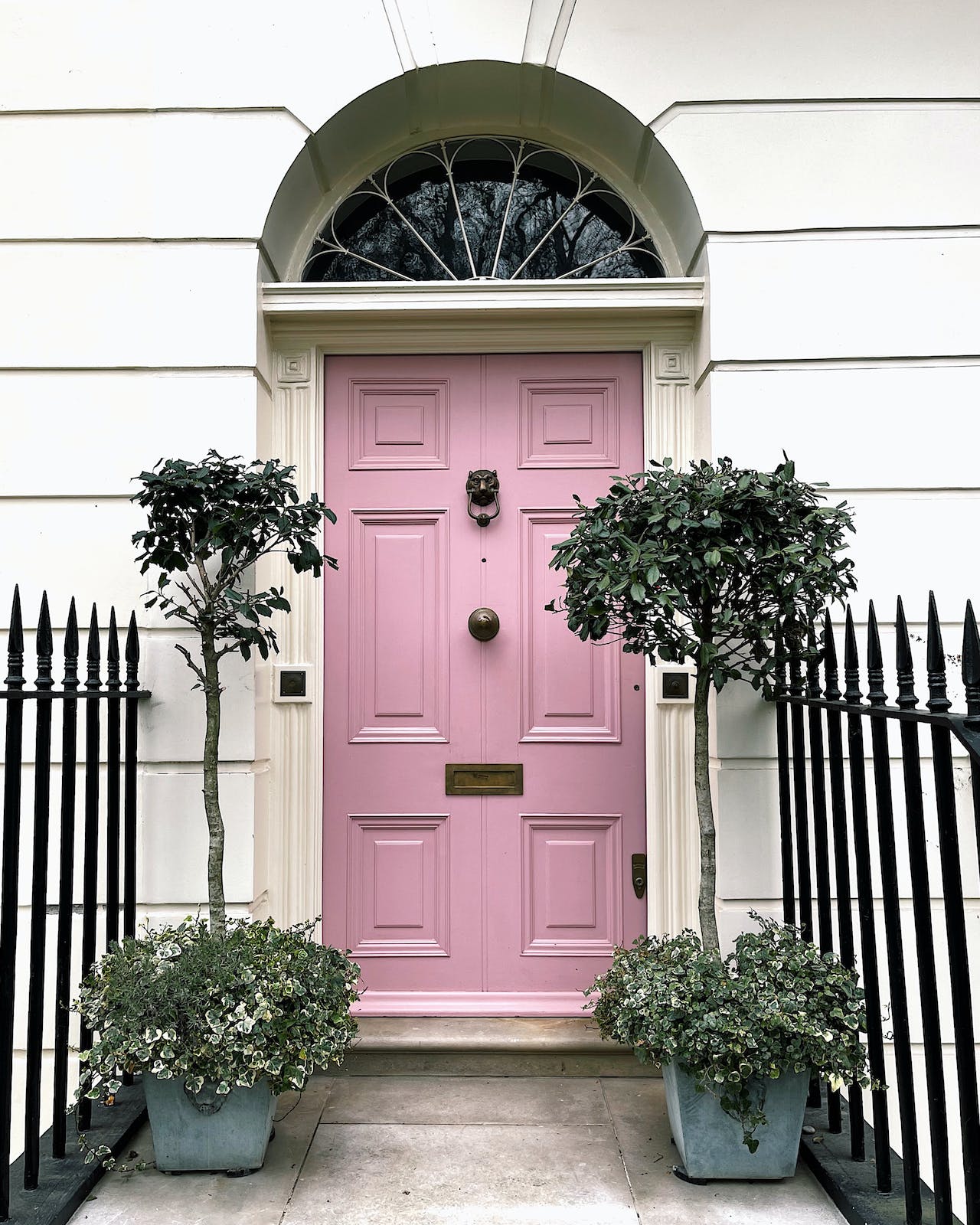Your Ultimate Guide To Replacing Doors And Windows On A Period Property
Period properties are highly desirable, with beautiful original features that give them charm and character. High ceilings, ornate mouldings and original windows are all highly prized. But what happens when your period property windows and doors are in poor repair and let in draughts? It could be time for a sympathetic replacement.
But where to start? We’re here to walk you through the best replacement windows and doors for an older property — whether that’s a period home or a listed building.

What’s the difference between a period property and a listed building?
The term ‘period property’ generally applies to any home built before the First World War. So you might live in a Georgian townhouse, a Victorian semi or an Edwardian terrace. However, a listed building has a special status as being of historical or architectural importance.
If you're lucky enough to live in a listed property, you'll need to apply for listed building consent before you make any interior or exterior changes. If you need help determining whether your home is affected, search the list of Grade I, Grade II* and Grade II properties.
Can you replace windows in a listed house?
If your property is listed, you'll be expected to maintain and repair your windows rather than replace them. However, your period property windows may be beyond repair. In that case, you'll require listed planning consent unless the new windows are 'like for like'. A 'like for like' replacement means using identical materials, glazing, mouldings and opening type.
Typically, your replacement windows will be made from timber, and a bespoke design can run into thousands of pounds.
Otherwise, you'll need to make a listed building consent application. Your paperwork must be accompanied by detailed drawings of the windows, specifying what materials will be used and how they'll be fitted. It's unlikely you'll be granted permission unless the proposed replacements are true to the spirit of the original windows.
Can you change the doors on a listed building?
Replacing doors in a listed property is a similar procedure. You’ll need listed building consent to remove a modern front door and replace it with one sympathetic to the character of the building. By and large, this means using a solid timber door rather than a composite. Generally, however, you’ll be required to maintain and repair your historic front door rather than replace it.
The same principles apply to interior doors, which are part of the property's overall design. Upgrades can spoil your home's character, especially if your interior doors have rare features like strap hinges and iron latches.
Do I need listed building consent to replace a door?
Listed building consent will be required to replace your doors. Unfortunately, consent is unlikely to be granted unless they're a 'like for like' replacement. You're likely to need timber doors that are an exact match for the existing internal and external doors.
Choosing the best windows and doors for a period property
Even if you don’t live in a listed property, replacement windows and doors for a period home should be chosen with care. Fortunately, modern replacement windows do an excellent job of being aesthetically pleasing with the added benefits of improved security and thermal efficiency.
If you live in a conservation area, you must talk to the Conservation Officer before making any exterior changes. They can advise whether your proposed changes require planning permission or fall under permitted development rights. Your home may be subject to an Article 4 Direction that overrides permitted development rights, which likely means you'll need a 'like for like' replacement.
However, if there are no restrictions to your period property renovations, we have some tips to help you choose replacement windows and doors. Follow these, and you’ll find replacements that are effortlessly stylish with bags of period character and charm.
Look for traditional designs
Period property renovations require a sensitive touch. The UK has a rich building heritage, and the loss of original features can ruin the aesthetic of a building. After all, you wouldn’t replace a feature bay window with a uPVC patio door. So start by looking for traditional window and French door designs that will suit your property and become a feature in their own right.
Sash windows reigned supreme throughout the Georgian, Victorian and Edwardian eras. It’s important to replicate your existing windows as closely as possible, including the astragal bars and multi or single-paned glazing.
If you're replacing bay windows, it's essential to maintain the exact proportions and symmetry of the original. This preserves the integrity of the building and the original aesthetic. Bespoke bay windows can replicate traditional designs.
Casement windows are the most popular style, particularly for period cottages. Look for multi-paned, side-opening designs rather than contemporary tilt-and-turn alternatives.
Solid timber doors are the obvious choice for a period front door. Still, modern composite doors can be manufactured to mimic a range of period styles. Features like panelling and stained glass inserts will add flair to your townhouse. A stable door adds timeless charm to a period cottage and is ideal for families with children and pets.
Solid wood is the preferred material for replacement windows. However, with improvements in uPVC over the years, replacement windows and doors can retain period charm whilst improving security and thermal efficiency.
Consider the colour of your doors and windows
Look to the location and surrounding properties when deciding the colour scheme for your doors and windows. Tastes change, so avoid picking on-trend colours for something more timeless.
Start by looking at your neighbour’s front door. Ideally, you should pick a complementary colour but one bold enough to make your front door the star of the show. A country cottage with an abundant garden looks lovely with a pastel-hued or timber door.
Traditional Georgian front door colours include red, black, dusky blue or grey. These will stand out beautifully from the muted tones of the brickwork.
Victorian multi-panelled doors look good in classic red and dark green to stand out against the brickwork. Or take your colour palette from any stained glass and opt for a mossy green or mid-tone blue for your Edwardian property.
Period windows look smart and streamlined in neutrals, including white, sage green or pale grey. Modern uPVC replacement windows are available in a range of heritage colours or woodgrain finishes to suit the style of your property and blend seamlessly with its character.
However, the more imposing your property, the bolder you can afford to be with your colour palette. For example, consider matching your door frame to the colour of your door to make a strong design statement.
Whatever your decision, ask for samples to compare with your brick or stonework before making your final decision.
Think about insulation and draughtproofing
One of the benefits of upgrading the doors and windows in your period property is to include double glazing. But before you tear out beautiful period property windows, consider draughtproofing. Wiper seals, draught excluder strips and silicone sealant can all help keep your home cosy and draught-free. You can improve thermal performance without compromising your period features.
However, if your windows are beyond repair, consider replacement windows with exceptional energy efficiency. Opt for period glazing and heritage-style units so the exterior of your home remains unaltered.
If you upgrade to double glazing, you'll also benefit from improving your home security. For example, modern sash window units can be fitted with highly secure multi-point locking systems.
Replacing a draughty front door means looking for a replacement door style that’s well-fitting and highly insulating. Composite doors are a premium choice, built around an insulating foam core. uPVC front doors are incredibly durable, solid and secure, with exceptional energy efficiency to keep your interiors cosy and comfortable.
Try stained glass for extra detail
Stained glass is a feature that lends effortless period charm to your replacement doors and windows. And if you’re fortunate to have original stained glass, you should take great pains to preserve it. However, if that’s not an option, reproduction glass will be a feature for years to come.
Embracing gorgeous shades of honey gold, pale rose and deep green, stained glass first appeared in Victorian front doors and other glazed panels. Edwardian homes fully embraced stained glass with Art Nouveau-style floral motifs.
If you're keen on adding those period extras, choose a design sympathetic to other homes in your neighbourhood. Stained glass is the perfect addition to a dark hallway where privacy is essential. And you can add those all-important period touches while improving your kerb appeal. The attention to detail makes all the difference between a standard renovation and one that elevates your home.

Add modern flair to your period property with windows and doors from Flying Doors
Renovating a period property can be a balancing act between period style and modern comfort and flair. At Flying Doors, we offer a 10-year guarantee and bespoke delivery so your replacement windows and doors arrive in perfect shape. Are you replacing period property windows or upgrading to stylish contemporary patio doors? Contact Flying Doors today.